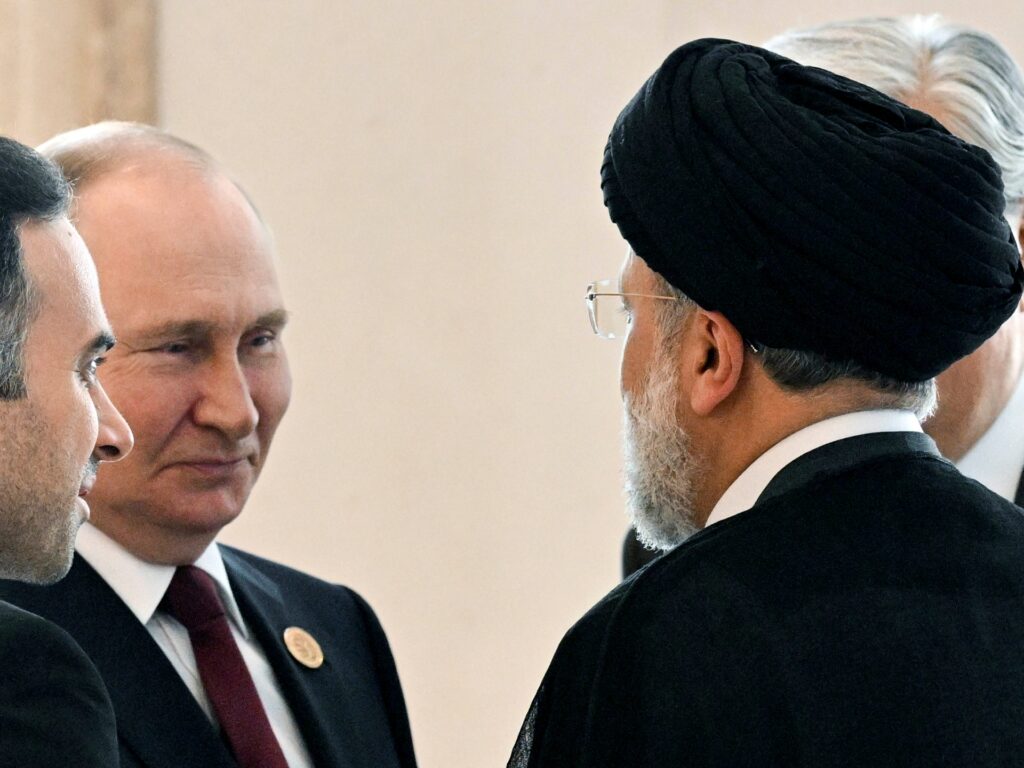Tehran, Iran – “The financial channel between Iran and the world is being restored,” the new governor of Iran’s central bank, Mohammadreza Farzin, said last week when he announced that Iran and Russia have taken a significant step towards linking their banking infrastructures amid Western sanctions.
Russia has yet to comment but, according to the Central Bank of Iran (CBI), after years of work, the two countries have managed to connect Iran’s SEPAM national financial messaging service to Russia’s Financial Messaging System of the Bank of Russia (SPFS).
SPFS is the Russian equivalent of the Society for Worldwide Interbank Financial Telecommunication (SWIFT), the global financial messaging and transfer system, and its goal is to link it with other major powers like China and India. It started developing SPFS when it was previously threatened with expulsion from SWIFT for annexing Crimea in 2014.
The entirety of the Iranian banking system is cut off from SWIFT as a result of waves of US sanctions that started in 2018 when then-President Donald Trump unilaterally withdrew from Iran’s 2015 nuclear deal with world powers. Talks to restore the nuclear accord remain deadlocked.
But now, Iran says, all of its several dozen financial institutions can connect with Russian banks, in addition to more than 100 banks from 13 other – mostly Eurasian – countries that have access to SPFS.
The announcement comes as Tehran and Moscow have increasingly grown closer in the past year following Russia’s invasion of Ukraine, which triggered more Western sanctions against Russia. Iran has also been targeted for supplying Russia with drones, which it says were delivered before the invasion of Ukraine in February 2022.
Advancing economic ties is central to the relationship, with bilateral trade growing to more than $4bn last year for the first time ever, according to Iranian and Russian officials.
The Iranian government said last week that Russia, with $2.7bn, was by far the largest investor in the sanctioned Iranian economy in the first year since the August 2021 start of the presidency of Ebrahim Raisi.
‘The political will is there’
To further expand economic relations, Iran and Russia needed a stronger banking link and now the missing technical infrastructure seems to be in place for that.
Before the Ukraine war and the sanctions it brought on Moscow, Iran was more interested than Russia in structured banking cooperation, but now it seems Russia is pushing for it too, according to Hamidreza Azizi, a fellow at the German Institute for International and Security Affairs.
“In that sense, it seems that for the first time in the past decades, there is a strong will on both sides to enhance and institutionalise economic relations,” he told Al Jazeera. “So, the political will is certainly there.”
However, Azizi said, at least in the short term, the Russian system will not turn into a viable alternative to SWIFT as it needs other big economies like China and India to join or even take the lead.
“As both countries are still quite cautious with regard to their relationship with the West, this will take a long time, if at all, to materialise. It also depends, to a great extent, on the future of the global rivalry between Washington and Beijing,” he said.
For Iran, simply linking its financial messaging system to Russia’s does not automatically strengthen banking relations because the banks connected to SPFS still need to decide if they want to work with Iranian customers and establish correspondent accounts with Iranian banks.
“It’s like a person is in the telephone network and can connect to anyone, but you can only say there’s communication when it actually happens,” Mohsen Karimi, CBI’s deputy for international affairs, told the state-linked Tasnim agency last week.
Azizi told Al Jazeera he doubts non-Russian banks connected to SPFS would take on the increased risk of having financial ties to Iran.
“I even have doubts whether all Russian banks are equally interested in doing so, as some of them still have interests in Europe and elsewhere that could be in jeopardy if they work with Tehran,” he said.
‘Lack of liquidity’
Tehran and Moscow are also pursuing to strengthen the use of their national currencies in trade to try to gradually weaken the impact of the US dollar and the euro on their economies.
In July last year, the Russian rouble was officially added to the basket of currencies that are offered in NIMA, a state-run foreign exchange market for Iranian importers and exporters launched in 2018 and overseen by the central bank.
Then-CBI chief Ali Salehabadi had said the rouble-rial market was launched with a deal worth 2 million roubles (about $28,300), also encouraging Iranian exporters to Russia to offer their roubles in the market.
NIMA now maintains a fixed rate, artificially lower than the open market, in an effort to prevent further depreciation of the embattled Iranian currency that has recently seen new all-time lows amid protests and ongoing tensions with the West.
Officials have not disclosed any data on the volume of rial-rouble deals in NIMA, or exactly how much of their overall bilateral trade is currently done in national currencies.
Making it possible for banks to process cross-border payments does not mean that trade will automatically increase, as Russian and Iranian traders continue to face challenges, according to Esfandyar Batmanghelidj, CEO of the Bourse & Bazaar Foundation, an economic think tank.
“There remains a lack of liquidity in the foreign exchange market for roubles and rials,” he told Al Jazeera.
“The Russian and Iranian economies also lack basic compatibility. The two countries export and import the same goods, meaning that they are competitors in those few markets that remain open to engagement in sanctioned trade.”
In this vein, Batmanghelidj said the announcement on the banking link is notable as it signals Russian and Iranian policymakers are working to overcome some of the technical barriers to increased trade, but it is not a “game-changer” by itself.

